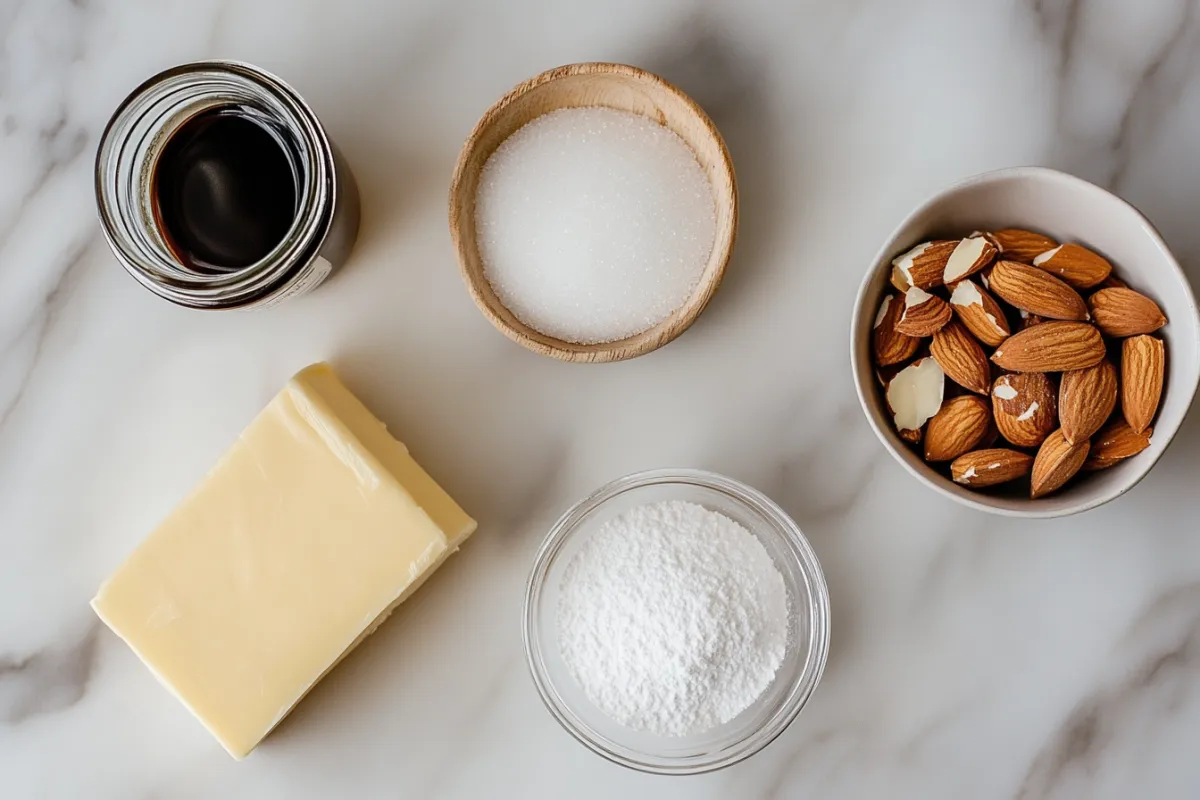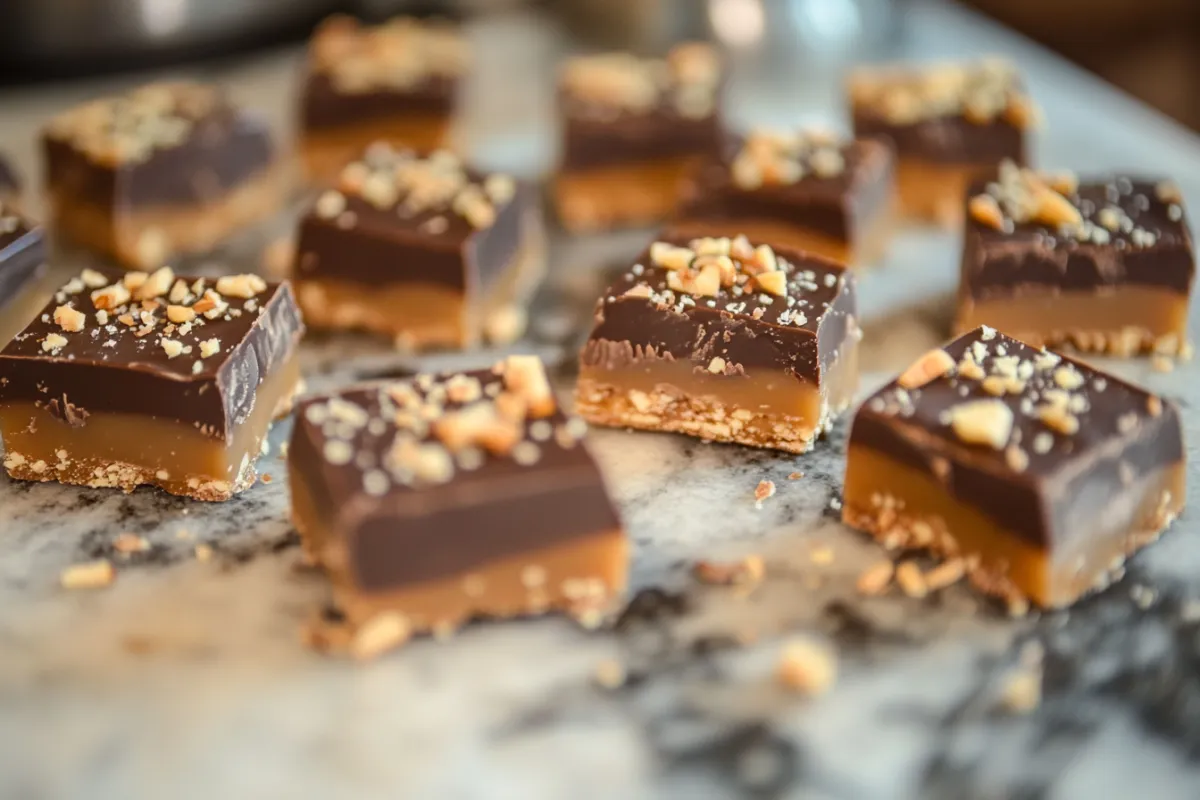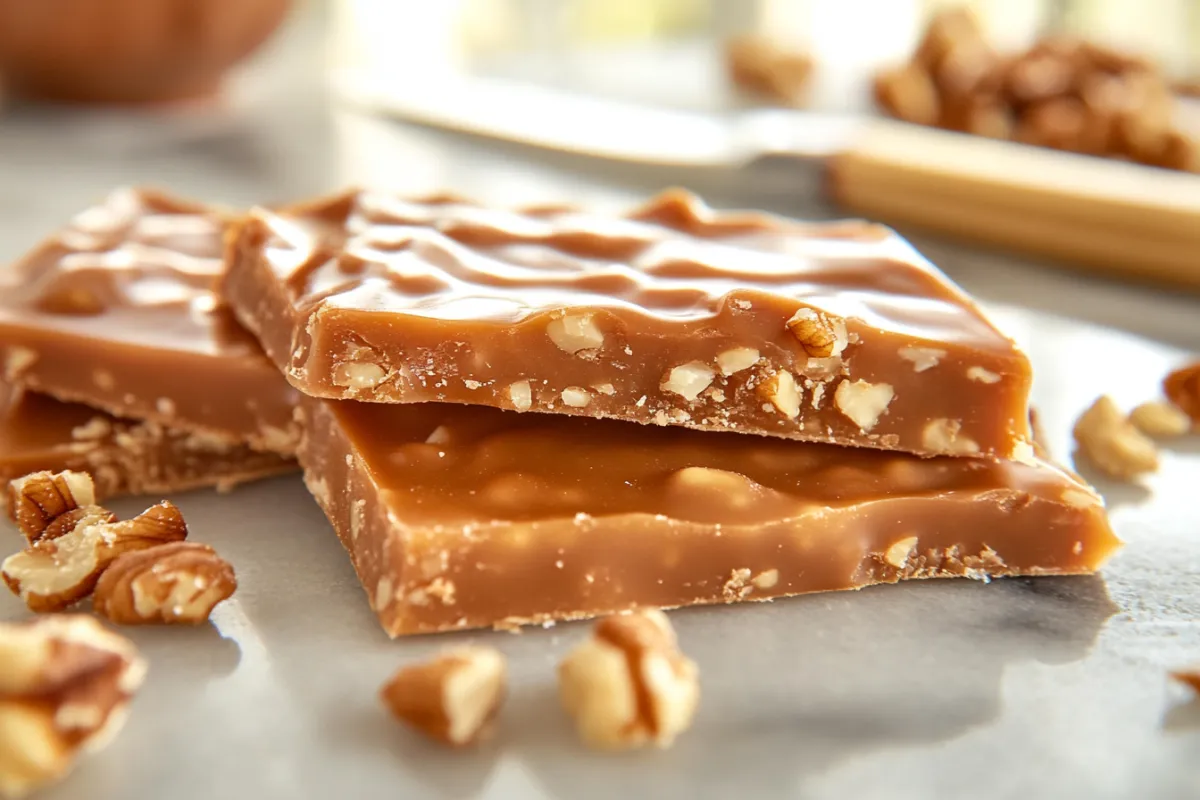Introduction: What is Toffee and Does It Contain Caffeine?
Toffee is a classic candy made from basic ingredients like sugar and butter. It originated in England, where people fell in love with its sweet, buttery flavor and crunchy texture. Over time, Toffee Recipe became popular worldwide, evolving into various forms to suit different tastes. Traditional toffee remains a simple, delicious treat, but modern versions sometimes include extras like chocolate, nuts, or spices to enhance the flavor. People who watch their caffeine intake might wonder if toffee contains caffeine, especially since some candies and desserts have coffee-like flavors or are paired with coffee. In this article, we’ll explore the ingredients and types of toffee to help answer the question: Does toffee have caffeine?
Traditional Toffee: What Are the Ingredients?
Traditional toffee is simple to make. The main ingredients are:

- Butter: This adds a rich, creamy texture to the toffee.
- Sugar: When heated, sugar caramelizes, giving the toffee its signature sweetness and golden-brown color.
- Optional Flavorings: Some people add vanilla, salt, or nuts like almonds or pecans to add extra flavor or crunch.
These ingredients are heated together to about 300°F (150°C) until the sugar caramelizes and the mixture hardens when cooled. Once it cools, the toffee is broken into pieces and enjoyed.
Because sugar and butter are caffeine-free, traditional toffee does not contain any caffeine. However, variations that include chocolate or coffee may have caffeine.
The Making of Toffee: How Is It Done?
The process of making toffee is all about getting the temperature right. When you heat the sugar and butter mixture to the “hard crack” stage (around 300°F or 150°C), the sugar caramelizes, and the candy becomes firm and crunchy. At this stage, the toffee develops its deep golden color and rich flavor.
Once the toffee mixture is cooked, it is poured onto a flat surface to cool. Some toffees are topped with melted chocolate or sprinkled with chopped nuts before cooling. When the toffee has hardened, it’s broken into pieces and ready to eat.
English toffee, a popular variety, often includes a layer of chocolate or a sprinkle of nuts, giving it an extra flavor boost. However, even with these additions, the traditional version without chocolate or coffee remains caffeine-free.
Does Toffee Contain Caffeine?
A Simple Answer
Traditional toffee, made with just butter and sugar, does not have caffeine. Neither of these ingredients naturally contains caffeine, so if you’re enjoying classic toffee, you don’t have to worry about consuming caffeine. However, some confusion arises from toffee variations that include chocolate or coffee, which do contain caffeine.
Why the Confusion?
Some people associate toffee with caffeine because it’s often paired with desserts that contain chocolate or coffee. Additionally, coffee-flavored or chocolate-covered toffees may contain small amounts of caffeine. While traditional toffee remains caffeine-free, these variations introduce caffeine into the candy.
Caffeine-Containing Toffees
While traditional toffee is caffeine-free, some varieties do contain caffeine, mainly due to added ingredients like chocolate or coffee.
Chocolate-Covered Toffee

Chocolate-covered toffee is one of the most popular variations, and the type of chocolate used influences the caffeine content:
- Milk Chocolate Toffee: Milk chocolate contains less cocoa, so it has lower levels of caffeine (about 5-10 mg per serving).
- Dark Chocolate Toffee: Dark chocolate contains more cocoa, leading to a higher caffeine content (around 15-30 mg per serving).
While the amount of caffeine in chocolate-covered toffee is much lower than in a cup of coffee (which has about 95 mg of caffeine), it can still contribute to your overall caffeine intake, especially if you’re sensitive to it.
Coffee-Infused Toffee
Another popular variation is coffee-flavored toffee, which is often infused with espresso or coffee to add a rich, bold taste. Naturally, these toffees contain caffeine. Brands like Kopiko Coffee Candy create toffees that are specifically made to taste like coffee. These candies can contain anywhere from 10-50 mg of caffeine per piece, which is comparable to a mild cup of coffee.
So, if you’re sensitive to caffeine or trying to avoid it, it’s important to read the label on coffee-flavored or chocolate-covered toffees. They may contain caffeine, even if the amount is small.
How Much Caffeine is in Toffee?
Caffeine Estimates in Chocolate and Coffee-Infused Toffees
The amount of caffeine in toffee that contains chocolate or coffee depends on the ingredients. Here’s a general idea of what you can expect:
- Milk Chocolate Toffee: About 5-10 mg of caffeine per serving.
- Dark Chocolate Toffee: Approximately 15-30 mg of caffeine per serving.
- Coffee Toffee: Caffeine content ranges from 10-50 mg per piece, depending on the strength of the coffee used.
In comparison, a regular cup of coffee contains about 95 mg of caffeine, so even the most caffeinated toffees have significantly less. However, for those who are particularly sensitive to caffeine, even these small amounts may be noticeable.
Reading Labels: Why It’s Important
If you’re watching your caffeine intake, checking labels is key when buying flavored toffees. While traditional toffee is caffeine-free, toffees with chocolate or coffee can have caffeine. By reading ingredient lists, you can avoid these if you prefer to stay caffeine-free.
Why Do Toffee and Coffee Taste Similar?
The Role of Caramelization
One reason toffee can remind people of coffee, even without caffeine, is the caramelization process. When you heat sugar, it undergoes a chemical reaction that creates rich, deep flavors similar to those found in roasted coffee. These complex flavors are a big part of what makes both toffee and coffee taste so appealing.
Coffee-Flavored Candies
Some candies use natural or artificial flavors to mimic coffee without including actual coffee or caffeine. These sweets can have a taste profile similar to toffee because they rely on the same caramelized sugar base, even though they don’t contain caffeine. This connection between the flavors of caramelized sugar and roasted coffee beans explains why toffee might remind you of coffee, even if it doesn’t contain caffeine.
Ingredients That Mimic Coffee
Toffee often includes browned butter and caramelized sugar, both of which contribute to a flavor profile that can taste like coffee. These ingredients undergo chemical changes when heated, producing flavor compounds that are also found in coffee.
Caffeine-Free Alternatives to Toffee
If you want to enjoy the flavor and texture of toffee without any caffeine, there are plenty of options:
- Carob Toffee: Carob is a caffeine-free substitute for chocolate, providing a similar taste without the caffeine.
- Butterscotch: Made from brown sugar and butter, butterscotch is closely related to toffee but does not contain caffeine.
- Fudge and Caramel: These candies offer a similar sweetness and chewy texture without the hard, crunchy consistency of toffee. They are typically caffeine-free as well.
Health Considerations: Caffeine in Sweets
Caffeine Sensitivity and Sweets
Even small amounts of caffeine in chocolate or coffee-flavored toffees can affect those who are sensitive to caffeine. Some people may experience:
- Trouble sleeping
- A faster heart rate
- Jitters or restlessness
Should You Avoid Certain Toffees?
If you’re sensitive to caffeine, it’s best to avoid toffees that contain chocolate or coffee. While the caffeine levels in these candies are lower than in a cup of coffee, they can still add up, especially if you’re also consuming other caffeinated products throughout the day.
Moderation is Important
Like any sweet treat, moderation is key. A small piece of chocolate-covered or coffee-infused toffee won’t likely cause any harm, but it’s important to be mindful of your overall caffeine intake. If you’re especially sensitive to caffeine, it’s always a good idea to enjoy these sweets in moderation or opt for caffeine-free alternatives.
FAQs
Does toffee contain caffeine?
Traditional toffee does not contain caffeine, but variations with chocolate or coffee may have small amounts of caffeine.
How much caffeine is in coffee toffee?
Coffee toffee can contain anywhere from 10 to 50 mg of caffeine, depending on the amount of coffee or espresso used.
What’s the difference between coffee-flavored and caffeine-containing toffee?
Coffee-flavored toffees may use flavoring that mimics coffee without containing actual caffeine. Caffeine-containing toffees include real coffee or espresso in their recipe.
Can I find caffeine-free chocolate toffee?
Yes, some brands use alternatives like carob, which is naturally caffeine-free, to make chocolate-flavored toffees.
Conclusion: Toffee and Caffeine Awareness
In its traditional form, toffee is a caffeine-free treat that everyone can enjoy. However, flavored versions that include chocolate or coffee may contain small amounts of caffeine. By reading labels and choosing caffeine-free alternatives, you can still enjoy the sweet, crunchy goodness of toffee without worrying about caffeine. Whether you prefer the classic version or a variation, toffee remains a beloved treat for all to enjoy.

